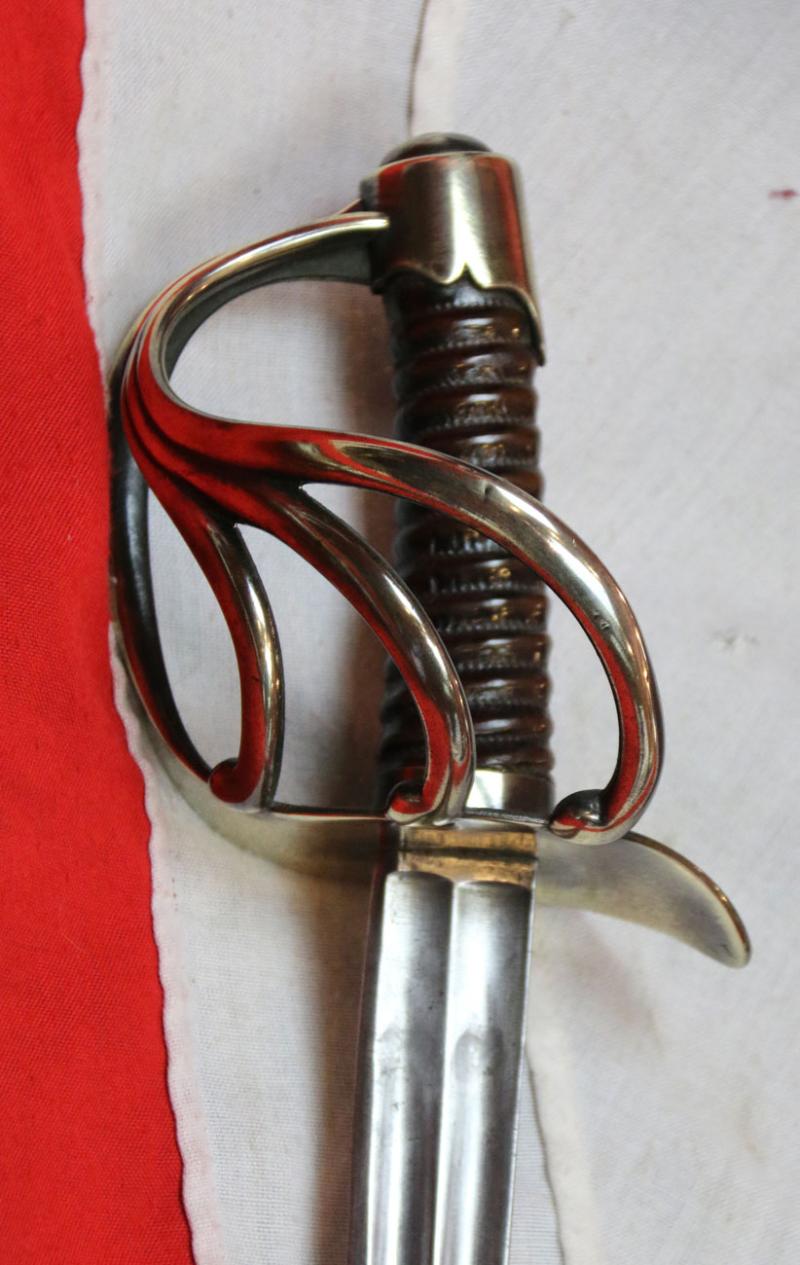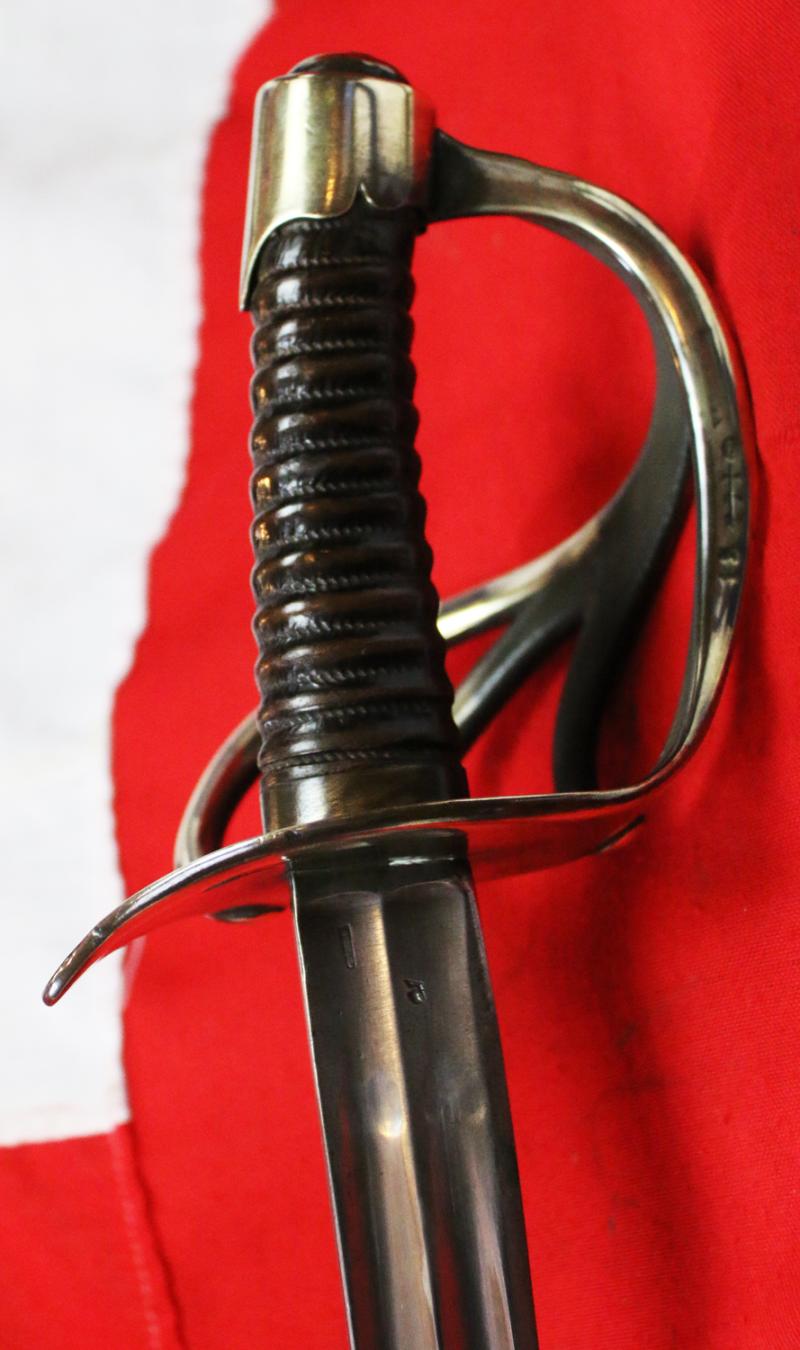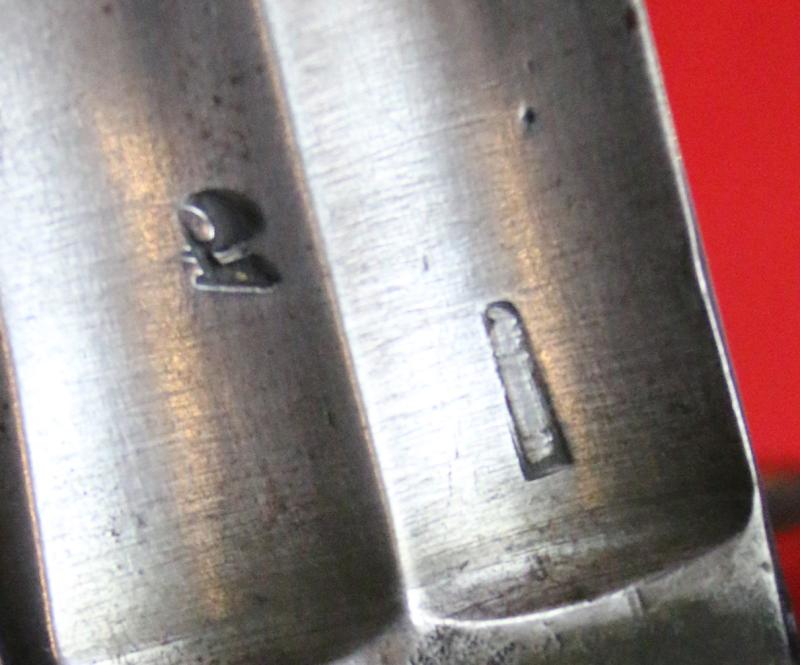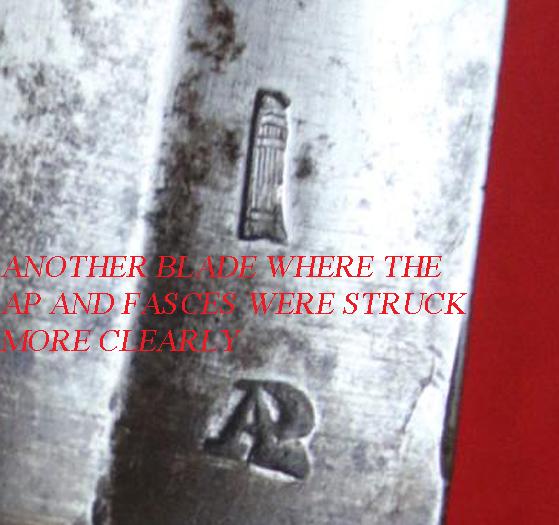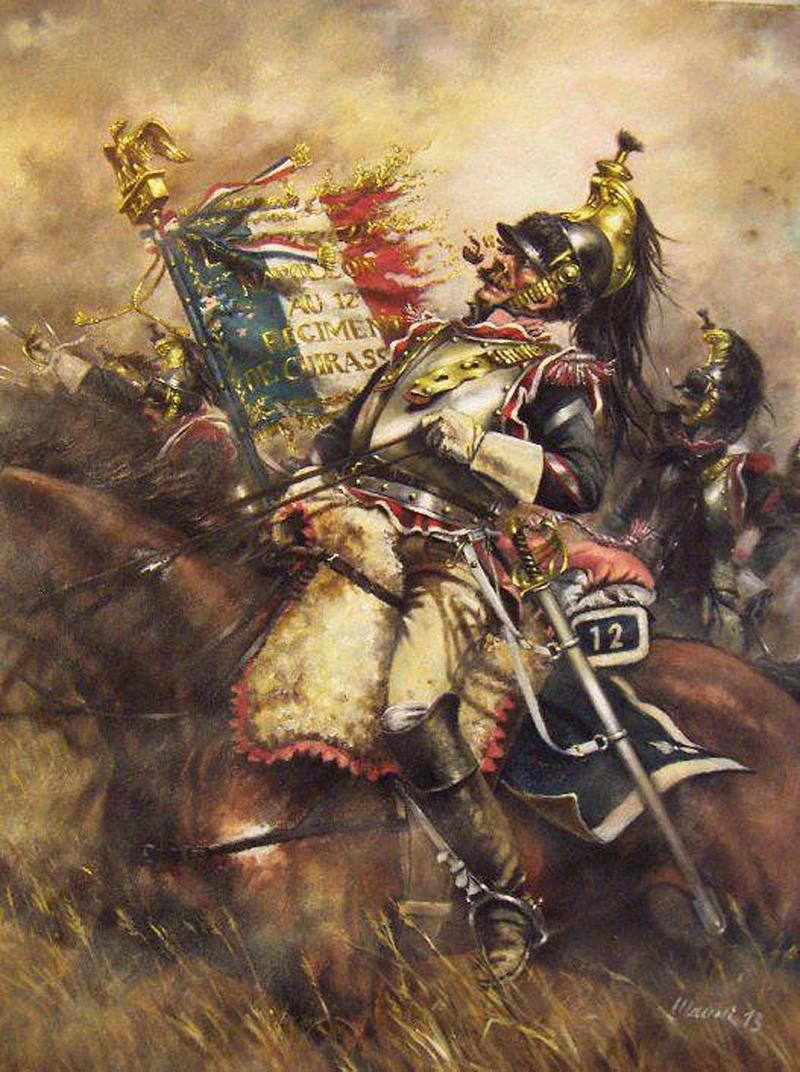A Fabulous, French, Napoleonic Wars, ‘Year 13’ Cuirassier Sword, Manufactured at Versailles in the Grand Armee Period, Circa 1805. AP, Blade Stamped With L'Atelier Precision Paris, & Fasces, Paris Blade Workshop. Battle of Austerlitz Up To Waterloo
This is a truly out standing example, despite being used for around 10 years in combat service, including surviving the Russian campaign in 1812 to Moscow, that saw the decimation of Napoleon’s entire Grande Armee, it is in superb condition and truly a museum grade example, as good as any sword in Les Invalides Musee de L’Armee in Paris.
Manufactured at Boutet’s Versailles workshop and issued to Napoleon’s early Empire period Grand Armee, to his elite cuirassiers.
Blade stamped with the mark of the Fasces for the 'Petit Garantie' 1798 to 1809, plus AP for L'Atelier Precision Paris, the Paris Workshop. Hilt stamped Versailles and inspectors mark.
Versailles was the premier hilt manufactury and assembly workshop for the Republic and Empire, and only the very finest would pass acceptance. All of the Elite Imperial Guard sword hilts were supplied from here. The Versailles Director was Boutet, probably the greatest & most respected Arms maker that ever lived, his pistols and guns, made for the King and Napoleon, are some of the most beautiful objects ever created by man.
This would have seen service in the Elite Cuirassiers of Napoleon's great heavy cavalry regiments of the Grande Armee such as in
the Battle of Austerlitz in 1805, French cuirassiers played a crucial role as the heavy cavalry, engaging in powerful charges and contributing significantly to the French victory. They were the backbone of the Grande Armée's cavalry, known for their shiny breastplates, "Minerva" helmets, and heavy sabers. Then in 1807 at Friedland. And in the French invasion of Russia ( Campagne de Russie) that began on 24 June 1812 when Napoleon's Grande Armee crossed the Neman River in an attempt to engage and defeat the Russian army. Napoleon hoped to compel Tsar Alexander I of Russia to cease trading with British merchants through proxies in an effort to pressure the United Kingdom to sue for peace. The official political aim of the campaign was to liberate Poland from the threat of Russia. Napoleon named the campaign the Second Polish War to curry favour with the Poles and provide a political pretence for his actions. The Grande Armee was a very large force, numbering nearly half a million men from several different nations. Through a series of long marches Napoleon pushed the army rapidly through Western Russia in an attempt to bring the Russian army to battle, winning a number of minor engagements and a major battle at Smolensk in August. Napoleon hoped the battle would mean an end of the march into Russia, but the Russian army slipped away from the engagement and continued to retreat into Russia, while leaving Smolensk to burn. Plans Napoleon had made to quarter at Smolensk were abandoned, and he pressed his army on after the Russians. The battles continued, but once the winter set in Napoleon's army was facing insurmountable odds that left it effectively shattered beyond repair. Napoleon fled, it is said, dressed as a woman, and the army left to it's sad and miserable fate. Only around 27,000 were able to return after a mere six months of the Russian campaign. The campaign was a turning point in the Napoleonic Wars. The reputation of Napoleon was severely shaken, and French hegemony in Europe was dramatically weakened.
The Grande Armee, made up of French and allied invasion forces, was reduced to a fraction of its initial strength. These events triggered a major shift in European politics. France's ally Prussia, soon followed by Austria, broke their alliance with France and switched camps. This triggered the War of the Sixth Coalition. The Cuirassiers Heavy Cavalry Regiments used the largest men in France, recruited to serve in the greatest and noblest cavalry France has ever had. They fought with distinction at their last great conflict at the Battle of Waterloo in 1815, and most of the Cuirassiers swords in England very likely came from that field of conflict, after the battle, as trophies of war. However, this sword was one of the few that were allowed to remain in the elite cuirassier corps after Waterloo, serving King Loius XVIIIth both before Napoleon's 100 days, and after his crushing defeat by Wellington at Waterloo. In fact one can see it has been issued, re-issued and even re-inspected by Capt. Louis Balaran, at least twice times with numerous serial numbers and inspection stamps stamped and struck out in its working life from 1806.
Every warrior that has ever entered service for his country sought trophies. The Mycenae from a fallen Trojan, the Roman from a fallen Gaul, the GI from a fallen Japanese, the tradition stretches back thousands of years, and will continue as long as man serves his country in battle. In the 1st century AD the Roman Poet Decimus Iunius Iuvenalis Juvenal
wrote; "Man thirsts more for glory than virtue. The armour of an enemy, his broken helmet, the flag ripped from a conquered trireme, are treasures valued beyond all human riches. It is to obtain these tokens of glory that Generals, be they Roman, Greek or barbarian, brave a thousand perils
and endure a thousand exertions". A truly magnificent Napoleonic sword in superb condition for it's age.
The largest sword of it's kind that was ever made or used by the world's greatest cavalry regiments. The cuirassiers were the greatest of all France's cavalry, allowing only the strongest men of over 6 feet in height into it's ranks. The French Cuirassiers were at their very peak in 1815, and never again regained the wonder and glory that they truly deserved at that time. To face a regiment of, say, 600 charging steeds bearing down upon you mounted with armoured giants, brandishing the mightiest of swords that could pierce the strongest breast armour, much have been, quite simply, terrifying. The brass basket guard on this sword is first class, the grip is totally original leather and a great colour only shows expected combat wear, the blade is double fullered and absolutely as crisp as one could hope for. Made in the Napoleonic Wars period.
The French Elite Cuirassier Sword is surely one of the most impressive Heavy Cavalry swords ever made, being of incredible size quality and stature. Used in the great campaigns of Napoleon by the Elite Grande Armee Cavalry, from Austria through the Russian Campaign, into the Peninsular War and finally the The Battle of Waterloo. All the Cuirassier were front line regiments, none ever utilized as Militia. With steel combat scabbard, multi fullered blade, brass 4 bar hilt with wire bound leather grip. Circa 1806. The blade is exactly as it should be, and bearing the matching Atelier Paris and Versailles stamp of 1806,
Overall 45.75 inches long in its scabbard, the spear pointed blade is 37.5 inches long. Just old aged patination to the blackened scabbard steel.
Likely used in all the battles below;
Austerlitz 1805
Friedland in 1807,
And in 1812 and beyond Borodino and
Moscow,
Ostrowno, and
Winkowo 1813: Reichenbach and Dresden, Leipzig and Hanau
1814: La Rothiere,
Rosnay,
Champaubert,
Vauchamps,
Athies,
La Fere-Champenoise and
Paris
1815: Quatre-Bras and Waterloo.
Photo 8 in the gallery is another blade, that we sold in the past, showing the AP and Fasces marks struck upon it, but just slightly deeper than this swords marks. For comparison, see the stamps shown in close up on photo 6 in the gallery, that are upon this sword offered now.
Code: 25720
2995.00 GBP


